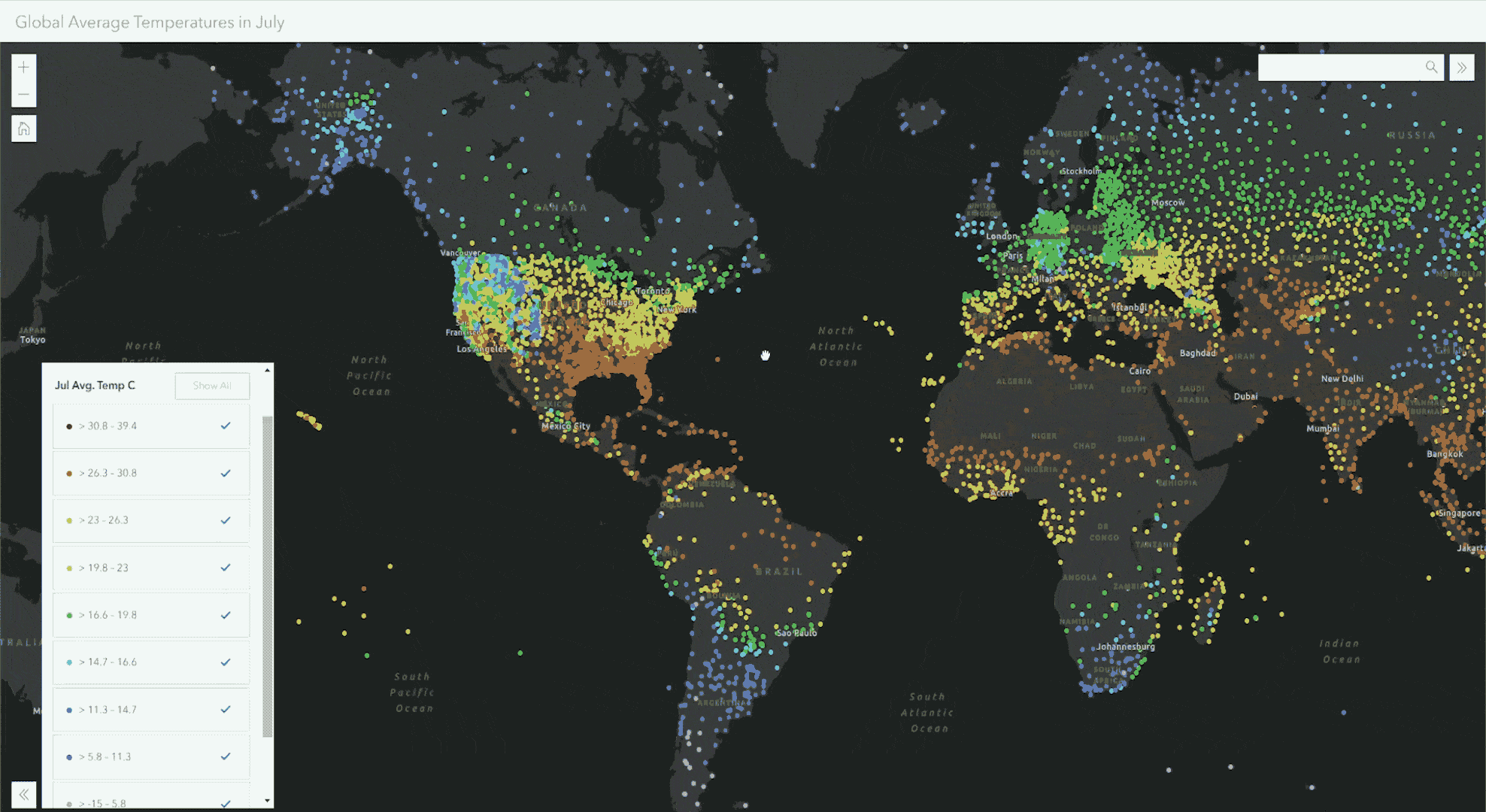
Bring your own data
Data exists in a variety of formats. ArcGIS Online makes it simple to bring in content from the cloud and upload files including spreadsheets, KML, GeoJSON, and common geospatial files. Use the included tools to refine your data and prepare it for visualization and analysis.


















